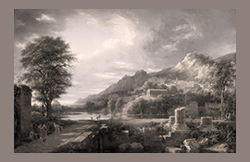scarica l’articolo in formato pdf: La conservazione dei monumenti antichi in Sicilia. Il caso del de-restauro della fontana arcaica di Agrigento
.
 Notwithstanding a centuries-long tradition of conservation in Italy, the principal cause of degradation of Greek and Roman buildings is found principally in the lack of a standardised intervention methodology and in the use of inappropriate building materials, incompatible with the tectonics of the original building. In effect, from the 1920s until recently, restoration interventions with steel reinforcement bars and epoxy resins to buildings made originally of stone seem to have been carried out on the principal archaeological monuments throughout the Mediterranean area causing similar structural and formal damage, which is sometimes irreversible. The Italian position, different from the Greek one, even with increasingly frequent architectural emergencies, including building collapses, seems to offer only a glaring lack of preparation in methodology, procedure and technique in the proposing of solutions or long-term intervention programmes. Instead, there are temporary interventions, such as protective coverings or support scaffolding which, remaining in situ beyond their capacity for protection, have worsened the conservation status of the building, as has recently happened for the archaic fountain in Akragas. The partial de-restoration of the fountain reported in this paper is part of a critical close examination of the history of its restorations since its discovery, which has confirmed that inexact analyses and a succession of ineffective interventions have damaged the entire architectural setup, whose typological characteristics of construction require a full and definitive intervention.
Notwithstanding a centuries-long tradition of conservation in Italy, the principal cause of degradation of Greek and Roman buildings is found principally in the lack of a standardised intervention methodology and in the use of inappropriate building materials, incompatible with the tectonics of the original building. In effect, from the 1920s until recently, restoration interventions with steel reinforcement bars and epoxy resins to buildings made originally of stone seem to have been carried out on the principal archaeological monuments throughout the Mediterranean area causing similar structural and formal damage, which is sometimes irreversible. The Italian position, different from the Greek one, even with increasingly frequent architectural emergencies, including building collapses, seems to offer only a glaring lack of preparation in methodology, procedure and technique in the proposing of solutions or long-term intervention programmes. Instead, there are temporary interventions, such as protective coverings or support scaffolding which, remaining in situ beyond their capacity for protection, have worsened the conservation status of the building, as has recently happened for the archaic fountain in Akragas. The partial de-restoration of the fountain reported in this paper is part of a critical close examination of the history of its restorations since its discovery, which has confirmed that inexact analyses and a succession of ineffective interventions have damaged the entire architectural setup, whose typological characteristics of construction require a full and definitive intervention.

